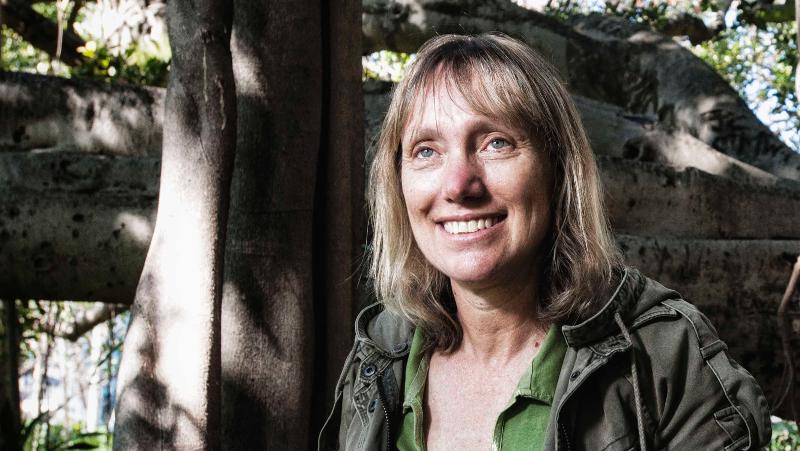
Health experts will today launch an Australian-first research study to understand national patterns in cancer incidence, survival and screening practices based on where people live.
The Atlas of Cancer in Australia will, for the first time, allow health agencies, policy makers and the community to understand the location and resource requirements for the most common cancers in Australia.
The 18-month research project is a partnership between Cancer Council, QUT, the Australian Institute of Health and Welfare and Australia and New Zealand Cooperative Research Centre for Spatial Information (CRCSI).
Cancer Council Queensland CEO Ms Chris McMillan said the Atlas of Cancer in Australia was based on the success of CCQ’s Atlas of Cancer in Queensland, released in 2011.
“This ground-breaking project will build on years of earlier work by CCQ to better understand the cancer divide between metropolitan and rural areas, as well as mapping the gaps linked to socio-economic status and other demographic factors,” Ms McMillan said.
“Like the original Atlas of Cancer in Queensland, the national Atlas will provide Queenslanders, and all Australians, with a comprehensive picture of how cancer incidence and survival varies across statistical local areas.
“This is an exciting step forward for cancer control at the local, national, and international levels, and is a globally significant investment in research.
“Importantly, it will advance our vision for a cancer-free future, accelerating the pace of translational work to transform cancer control in local communities.”
The wholly digital atlas will examine national geographical and demographic patterns and their relationship to cancer in Australia.
“Every year, more than 120,000 Australians are diagnosed with cancer, but some of us face greater risks of diagnosis and death than others,” Ms McMillan said.
“The project will, for the first time, compare those differences and offer critical insight into patterns of cancer and outcomes in Australia, depending on where people live.”
The Atlas of Cancer in Australia will be underpinned by state-of-the-art statistical models and analyses developed by award-winning statisticians from CCQ and QUT.
“The Atlas will allow us to gain new insights about patterns across the country – for the first time people will be able to learn about cancer rates in their own region,” said Distinguished Professor of Statistics at QUT and Deputy Director of the ARC Centre of Excellence for Mathematical and Statistical Frontiers (ACEMS), Dr Kerrie Mengersen.
The Atlas will be an online, interactive digital resource, with a strong focus on novel visualisation methods that will guide users to appropriately interpret the significance of the geographical patterns.
“Through the CRCSI Health program, new technology and methodology have been developed for the Australian public health sector by bringing together experts in spatial health research, health agencies and clinicians,” CEO of CRCSI, Dr Peter Woodgate, said.
“This increased capability continues to assist the health sector by providing a clear evidence-base for policy development to improve health outcomes and service delivery.
“The Atlas of Cancer in Australia will provide small-area estimation of cancer incidence, survival and screening without jeopardising privacy and confidentiality.
“The digital and dynamic nature of the Atlas will allow more effective interaction with the data by the community and provide an extraordinary resource to build on our knowledge of cancer in Australia.”
More information about Cancer Council Queensland is available at cancerqld.org.au or Cancer Council’s 13 11 20.
For more information or interviews, please contact:
Katie Clift, Executive Manager, Media and Spokesperson, Cancer Council Queensland
Ph: (07) 3634 5372 or 0409 001 171
Rose Trapnell, QUT media team leader, media@qut.edu.au or 0407 585 901
Cancer in Australia 2017 – AIHW statistics
One new case of cancer is diagnosed every four minutes in Australia.
- It’s estimated more than 134,000 new cases of cancer will be diagnosed nationally in 2017 – almost three times the number diagnosed in 1982.
- The highest incidence rates for all cancers combined between 2008 and 2012 (the latest figures available) were recorded in Queensland – a rate of 532 cases of cancer per 100,000 people.
- At the end of 2012, 410,530 Australians were alive who had been diagnosed with cancer in the previous five years.
- More than 994,000 Australians are alive today after being diagnosed with cancer in the previous three decades.
- Overall, Australians diagnosed with cancer have a 68 per cent chance of surviving for at least five years, compared to the general population.
- The report estimates more than 47,753 Australians will die from cancer this year alone – an average of 131 people every day.
- Lung cancer is expected to be the leading cause of cancer death in both males and females in 2017 – followed by prostate cancer in males and breast cancer in females.
- Compared with major cities, people living in very remote areas of Australia are 1.2 times more likely to die from all cancers combined.


